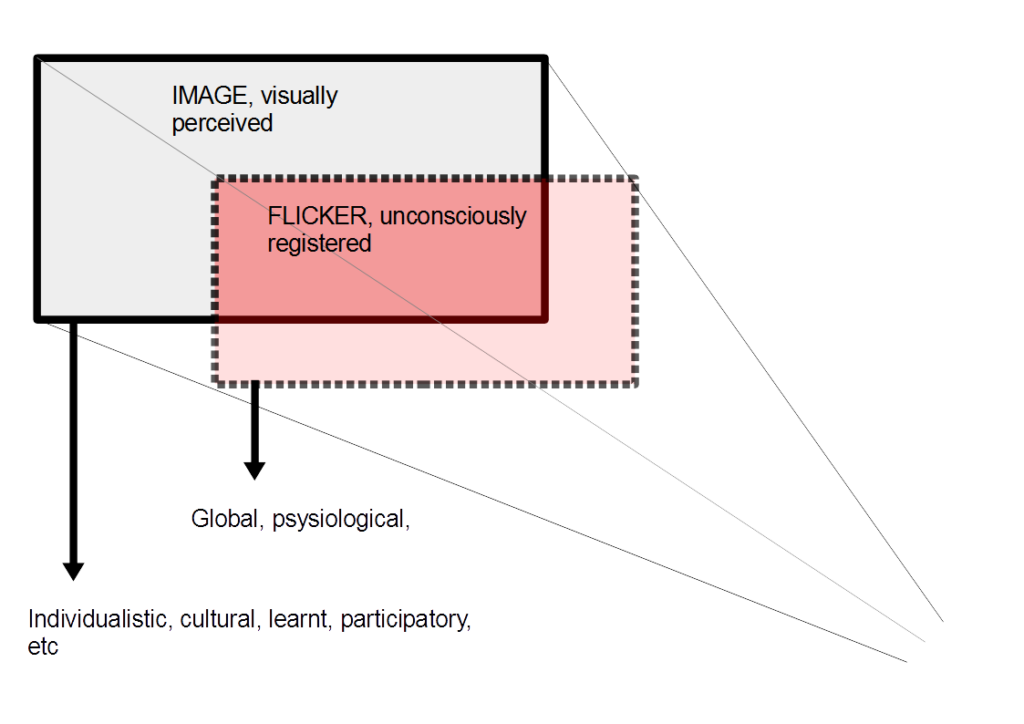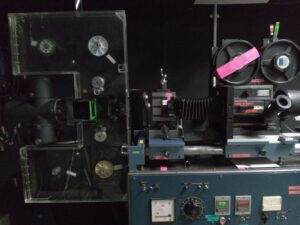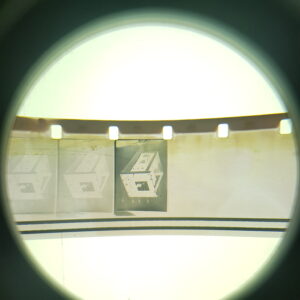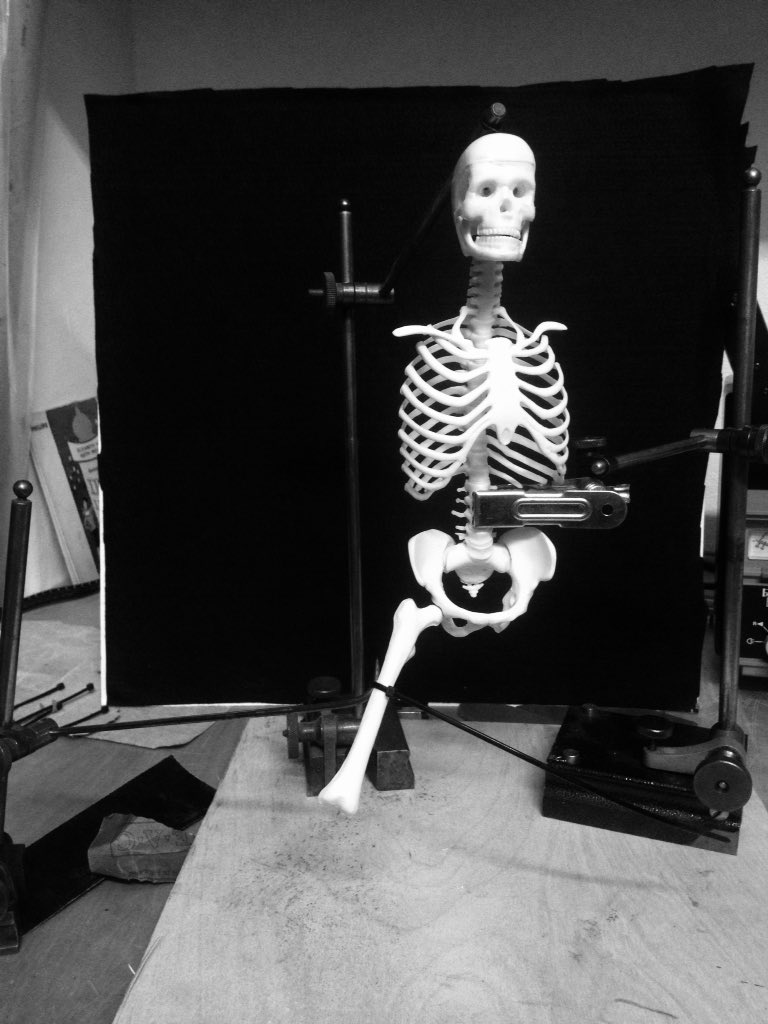In every moment of an analogue film projection, there is another mask, or matrix, or screen which is going to effect viewing and viewers in different ways than the perception of visually recognized cultural forms. This ‘FLICKER’ based screen is the total background field effect of an analogue image regardless of the content of ‘the image’. This screen is also present in DCP projection but this is not currently the object of my study. Throughout the history of cinema analogue presentation, this ‘flicker screen’ has been remarkably consistent and there are various ways of measuring its ontologcal properties as well as its psysiological impacts on human viewers.
Regarding the former of these, this is of course linked to the essential nature of analogue film itself, ie 24 frames per second image succession rate. So 48 hz and 72hz are common frequencies as they represent 2 bladed and 3 bladed shutters respectively. But, as I’m trying to investigate in other pursuits on this blog, should we count the blacks as well as the lights. A two bladed shutter shows each 1/24th second frame twice, but it also shows a black/rest twice resulting in the (truer?) frequency count of 96hz? We also have the issue of ‘duration of image segmentation’ within the overall flicker field. Is it just too simplistic to say that beyond the 8 – 30hz ‘danger zone’ we are nevertheless still in a ‘health threat’ zone.
The first thing to note about these frequencies is that they are SLOW. They infact sit near the threshold of human flicker cognition which is commonely said to be around 80hz although this is a complicated field that goes into cone properties aas well as neural ones.For eg, an easy test to do yourself is look at a projected image head on. Then look above it, you will notice flickker more when you look above or away and this must be down to the different capacities of eye components to perceive flicker.

LINKS listing
ALZHEIMER’s https://www.sciencedaily.com/releases/2020/02/200203141446.htm


